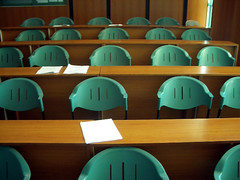It shouldn’t be news to anyone that California is in a major crunch these days, and not the granola kind. The budget crisis has gotten so bad that in Los Angeles, Mayor Antonio Villaraigosa has threatened to shut down the entire city government for two days a week to save money.
KPCC’s Air Talk had the mayor on to address threats facing the city’s Department of Water and Power from ratings agencies, and options to keep the city afloat beyond a partial shut down.
Villaraigosa told KPCC’s David Lazarus:
It’s not something that I want to do. But it’s something we need to look at and discuss. … Clearly we don’t’ have a lot of options where we know that we don’t have the cash to pay employees. We are liable to them when we ask them to work, knowing we don’t thave the cash to pay them.
In the comments section of the KPCC page, concerned LA residents left pressing questions about other budget issues hitting City Hall, like early retirement payments for city employees and furloughs for municipal departments outside of the general budget.
LA school budgets are also being cut. That’s drawing some Hollywood names to make the issue a hit online, like in this Funny or Die video with Megan Fox and Brian Austin Green, who visited Wonderland Avenue Elementary School in LA to get their point across about overcrowding and budget cuts:
It’s not just LA that’s affected. Earlier this month, protests against budget cuts for schools were held in northern California. Youth Radio reporters caught up with protesters in Berkeley.
Waving signs that read “No Cuts” and “Defend Public Education,” the crowd of around 150 people included elementary school student Eliza Fosket Hyde, 7, who made a homemade sign “We want money for pableck shools.”
